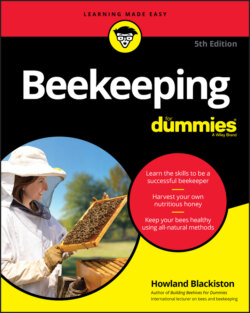Читать книгу Beekeeping For Dummies - Howland Blackiston - Страница 48
Shall we dance?
ОглавлениеPerhaps the most famous and fascinating “language” of the honey bee is communicated through a series of dances done by foraging worker bees who return to the hive with news of nectar, pollen, or water. The worker bees dance on the comb using precise patterns. Depending on the style of dance, a variety of information is shared with the honey bees’ sisters. They’re able to obtain remarkably accurate information about the location and type of food the foraging bees have discovered.
Two common types of dances are the round dance and the waggle dance.
The round dance communicates that the food source is near the hive (within 10–80 yards). Figure 2-4 illustrates dancing movements.
For a food source found at a greater distance from the hive, the worker bee performs the waggle dance. It involves a shivering side-to-side motion of the abdomen while the dancing bee moves in a figure eight pattern. The vigor of the waggle, the number of times it is repeated, the direction of the dance, and the sound the bee makes communicate amazingly precise information about the location of the food source. See Figure 2-4.
The dancing bees pause between performances to offer potential recruits a taste of the goodies they bring back to the hive. Combined with the dancing, the samples provide additional information about where the food can be found and what type of flower it is from.
Courtesy of Howland Blackiston
FIGURE 2-4: The round dance (top) and the waggle dance (bottom).
